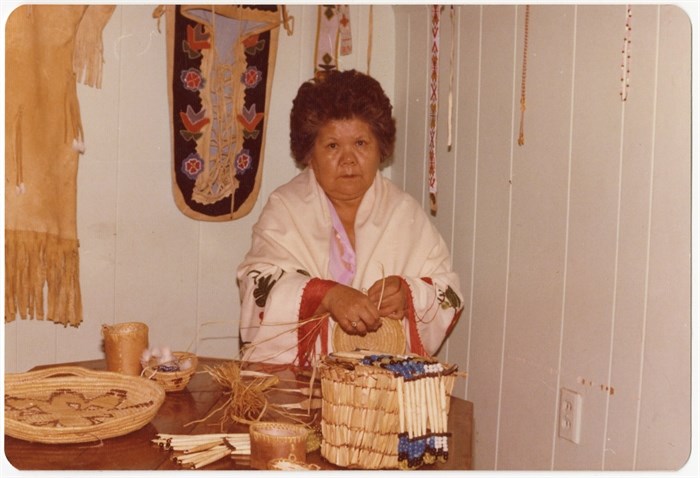
Mary Thomas
Image Credit: Kelowna Public Archives/2022.001.001
March 08, 2022 - 11:20 AM
It's International Women’s Day, a day designed to bring awareness to women’s equality so there's no better time to showcase the badass women in the Thompson-Okanagan region's history.
These women have made a difference, shaping their communities and culture.
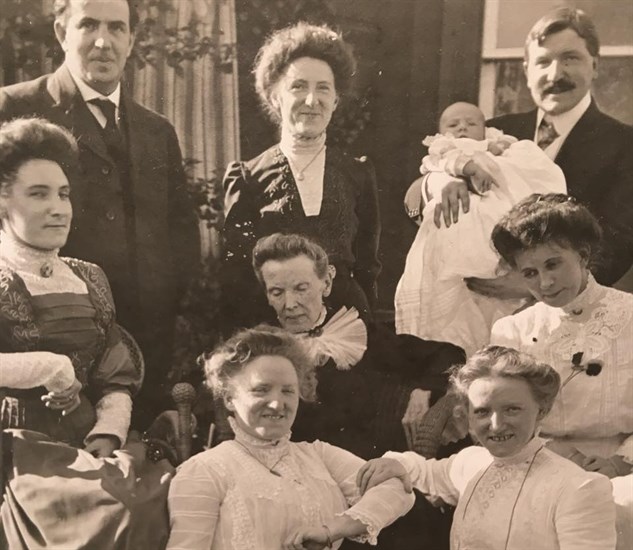
The Beattie Sisters
Image Credit: FACEBOOK/Kamloops Museum and Archives
The Beattie Sisters
These five daughters of Irish settlers, Martin and Mary Jane Beattie, are credited with establishing private schools in Kamloops in the early 1900s at a time when public education was non-existent, said Kamloops Museum archivist Jaimie Fedorak.
Lillian Beattie first opened Kamloops Select School in their family home at 100 Lansdowne Street. The school saw quick success and expanded in 1896 to taking boarding students, changing names to become the Kamloops Day and Boarding School.
In 1906, they moved out of the Beattie's home to 250 St. Paul Street, known as the Zetland House, and expanded to all new facilities at 1912 at 354 Columbia Street, according to the Kamloops Museum documents.
Her sister Emily Beattie became the first women principal in Kamloops at Kamloops High School when the other principal went off to fight in the First World War.
Sisters Florence Shaw and Harriette Beattie were both teachers at Lillian's school, with Florence teaching at Kamloops Select School alongside her sister Lillian, before teaching at the Shuswap School in 1987. Harriette eventually moved A.L. Fortune School in Enderby to be a member of the school's first staff and was promoted to principal in 1913. In 1954, the Mabel V. Beattie school was opened in her honour and to this day, according to the museum, the elementary school retains its name, M.V. Beattie Elementary.
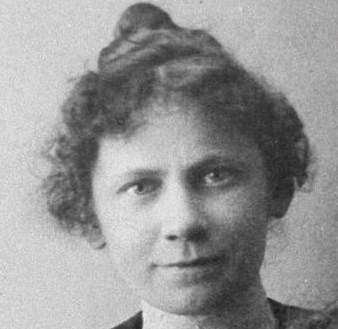
Mary Spencer
Image Credit: Wikipedia Commons
Mary Spencer
Mary Spencer was a prominent photographer in the early 1900s, it wasn't unheard of for women to have their own businesses, but it wasn't common, Fedorak said.
Born in 1857 and originally from Ontario, Spencer hobnobbed with all kinds of interesting folk with her business Mary Spencer's Photography Studio, formerly located in downtown Kamloops on Victoria Street, she said.
The Kamloops Museum has “tons” of her photos and she helped preserve Kamloops history, she said. Her portraits became popular amongst Kamloops notables and many of her scenic images of the Kamloops area were made into postcards and souvenir books. She was also hired in 1906 by the Vancouver Daily Province to cover the trial of a train bandit. In 1909, she sold the business and moved to Summerland to run an orchard with her sister, according to the Kamloops Museum.
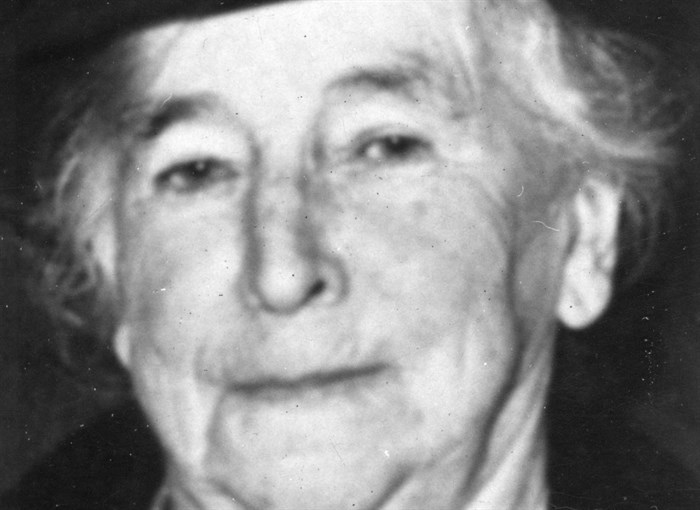
Hester White
Image Credit: Penticton Museum Archives/20400
Hester White
A prolific writer and historian, Hester White’s diaries can still be found at the Penticton Museum, said archivist Karen Collins.
Born in Osoyoos in 1878, she lived across the South Okanagan and her life was defined by her involvement in several community organizations including the Okanagan Historical Society, which she helped found the Penticton branch.
She was also a part of the Women’s Institute and the Imperial Order Daughters of the Empire and helped establish a cottage hospital in Penticton. She died in 1963, according to the Canadian Writing Research Collaboratory.
White chronicled her family’s history in the South Okanagan and was so descriptive in her writing that when reading her diaries, “it was like a movie was playing in my head,” Collins said.
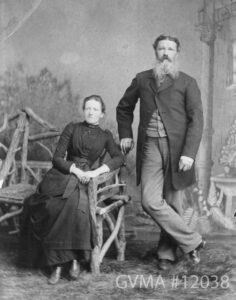
Clara & Walter Dewdney, 1889
Image Credit: The Museum & Archives of Vernon
Clara Chipp
Chipp was the driving force behind establishing the Vernon Jubilee Hospital, writes Museum and Archives of Vernon’s communications coordinator Gwyn Evans.
Chipp came to Vernon in 1888 after marrying the town’s first government official, Walter Dewdney. Walter had recently lost his wife, and Clara stepped up to act as a surrogate mother to his three children. After his death four years later, she, with the three stepchildren, moved into a new house closer to her father, John Chipp.
In 1894, diphtheria broke out in Vernon, and underlined the urgent need for a local health care facility. At this time, Chipp was vice-president of the National Council of Women and used her position to gain financial support towards the construction of a hospital. In 1897, Vernon’s first Jubilee “Cottage” Hospital was opened in a boarding house on 28 Avenue — a temporary facility until the new building opened on Hospital Hill in 1909.
Although she never saw its opening — she died by suicide in 1900 — she was instrumental in establishing a health-care facility in Vernon.

Isobel Stillingfleet, second from left
Image Credit: Kelowna Public Archives #6921
Isobel Stillingfleet
Kelowna’s Isobel Stillingfleet won awards for her apple wrapping abilities in the packinghouses, said Jen Garner, head of programming with the Okanagan Heritage Museum.
Called an apple wrapped flapper, in 1937, she won a competition in England, beating out packers from New Zealand and Australia wrappers and was crowned the Apple Queen of the British Empire in 1937.
Packinghouses were normally filled with men, but during the First World War when the men went off to war, women began filling the rolls, Garner said.
“Isobelle was a couple decades after but 30 years early it would have been considered very unladylike for her to work at a packinghouse but by the 1930s it was totally commonplace.”
Mary Thomas
Mary Thomas was a Secwepemc (Shushwap) women, from the Neskonlith Band. Born in the early 1900s, Thomas her Secwepemc culture from her mother and grandmother until she was sent to the Kamloops Indian Residential School when she was six.
During the 1970s, she helped to establish the Central Okanagan Friendship Centre in Kelowna, a place for First Nations people to gather and to support their culture.
“She came out of residential school and was able to work through the trauma of that and become a teacher of her culture,” Garner said. “She was instrumental in teaching the Shushwap culture, producing books… on specific culture topics.”
The Okanagan Heritage Museum is hosting an online event, March 8, and will be highlighting other famous historical women in the Central Okanagan from 7 to 8:30 p.m. For more information visit the museum’s website here.
— This article was corrected April 14, 2022, as some of the women's birth dates were incorrect.
To contact a reporter for this story, email Carli Berry or call 250-864-7494 or email the editor. You can also submit photos, videos or news tips to the newsroom and be entered to win a monthly prize draw.
We welcome your comments and opinions on our stories but play nice. We won't censor or delete comments unless they contain off-topic statements or links, unnecessary vulgarity, false facts, spam or obviously fake profiles. If you have any concerns about what you see in comments, email the editor in the link above.
News from © iNFOnews, 2022